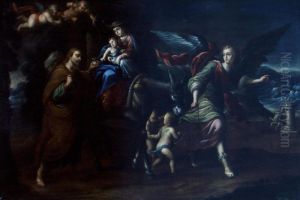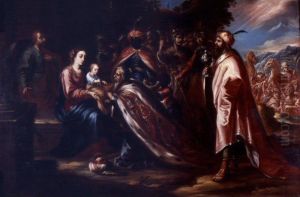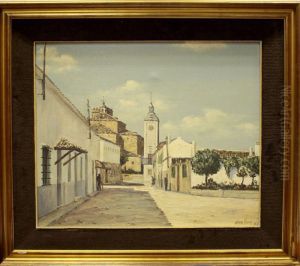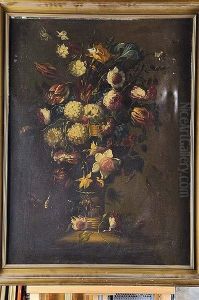Arellano Paintings
Juan de Arellano was a Spanish painter born on August 3, 1642, in Santorcaz near Madrid. He is best known for his floral still life paintings which were a significant contribution to the genre in the Baroque period. Arellano's work was deeply influenced by the still life painters of the Low Countries, which was typical for the time, as the Spanish Habsburgs ruled over parts of the Netherlands and brought many cultural influences, including artistic, to Spain.
Arellano began his artistic training with his father, who was also a painter, and later he apprenticed with the Madrid-based artist Juan de Solís. His career was primarily centred in Madrid, where he established himself as a popular artist, particularly among the clergy and religious institutions. His paintings often included an array of flowers in full bloom, artfully arranged and set against a dark background, which made the vivid colors stand out even more.
Despite his success with floral compositions, Arellano did not achieve significant financial prosperity, and his work was sometimes undervalued during his lifetime. He was prolific, and his paintings were known for their realism and intricate detail, capturing the transient beauty of flowers with a skilled and delicate touch. Arellano's technique involved creating texture and volume through the use of light and shade, which breathed life into his bouquets.
Juan de Arellano died on October 13, 1700, in Madrid. After his death, his work fell into relative obscurity until it was rediscovered in the 19th century. Today, Arellano is recognized for his mastery of the floral still life and is considered one of the foremost Spanish exponents of the genre. His paintings are held in numerous museums and private collections, appreciated for their technical skill and enduring beauty.



